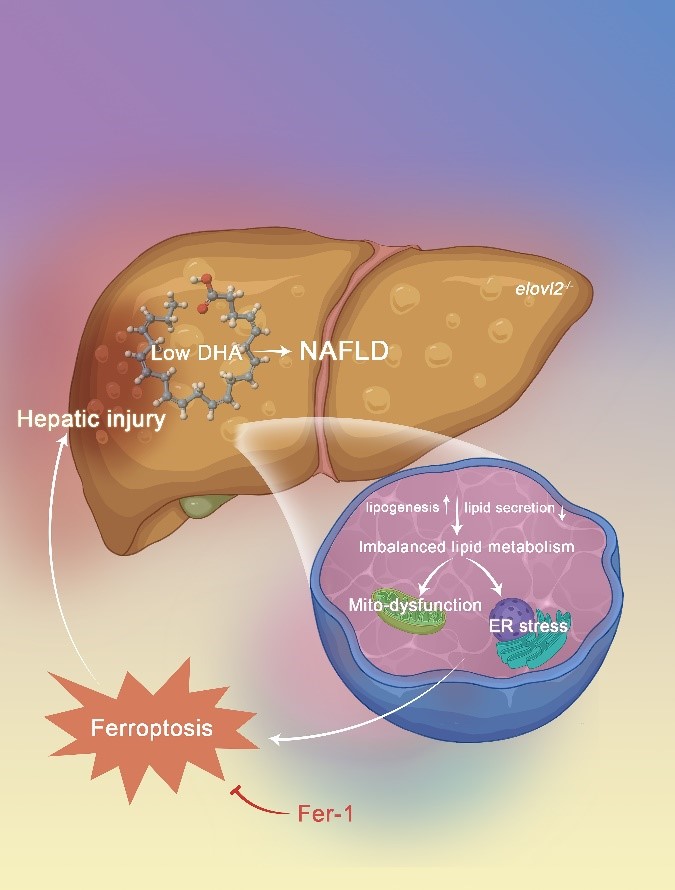Highlights
Endogenous DHA Biosynthesis Maintains Lipid Homeostasis and Prevents Fatty Liver Disease
Nonalcoholic fatty liver disease (NAFLD) has become the most prevalent chronic liver disease worldwide, posing a significant public health concern. In aquaculture, hepatobiliary syndromes resulting from fatty liver disease are now recognized as a typical lipid metabolism disease with high morbidity and serious harm. Previous studies in both mammals and aquaculture species have shown that the intake of omega-3 polyunsaturated fatty acids (n-3 PUFAs), particularly docosahexaenoic acid (DHA), could prevent and mitigate fatty liver disease. However, the effects and mechanisms of endogenous DHA biosynthesis in maintaining hepatic lipid homeostasis remain poorly understood.
Recently, a research group led by Prof. SUN Yonghua from the Institute of Hydrobiology (IHB) of the Chinese Academy of Sciences used zebrafish models, either deficient or rich in endogenous DHA, to reveal the important role of endogenous DHA biosynthesis in maintaining hepatic lipid homeostasis and resisting NAFLD. This study was published in the Journal of Biological Chemistry.
In this study, by the Oil-red staining, hematoxylin-eosin staining and triglyceride concentration detection, the researchers found that the liver of elovl2 mutant zebrafish, which are deficient in endogenous DHA, exhibited disordered lipid metabolism, a significant increase in lipid droplets, enlarged and ballooning hepatocytes, and elevated triglyceride levels, which are typical phenotypes of NAFLD.
Moreover, by transmission electron microscopy analysis, RNA sequencing analysis, immunofluorescence, and western blot, the researchers found that the elovl2 mutant hepatocytes exhibited disrupted mitochondrial structure and function, activated endoplasmic reticulum (ER) stress, and hepatic injury. They unveiled that the hepatic cell death and injury were mainly mediated by ferroptosis, rather than apoptosis. Treatment with Fer-1, a ferroptosis inhibitor, significantly alleviated hepatic cell death and accumulation of lipid droplets in the liver of elovl2 mutant zebrafish.
Additionally, elevating DHA content in the mutants, either by introducing an omega-3 desaturase (fat1) transgene or feeding with a DHA-rich diet, could strongly alleviate NAFLD features and ferroptosis-mediated hepatic injury.
This study revealed the important role and mechanism of endogenous DHA biosynthesis in maintaining hepatic lipid homeostasis and protecting against NAFLD, as demonstrated using zebrafish models deficient or rich in endogenous DHA.

The model of biosynthetic deficiency of docosahexaenoic acid causes nonalcoholic fatty liver disease and hepatocyte injury (Image by IHB)
(Editor: MA Yun)